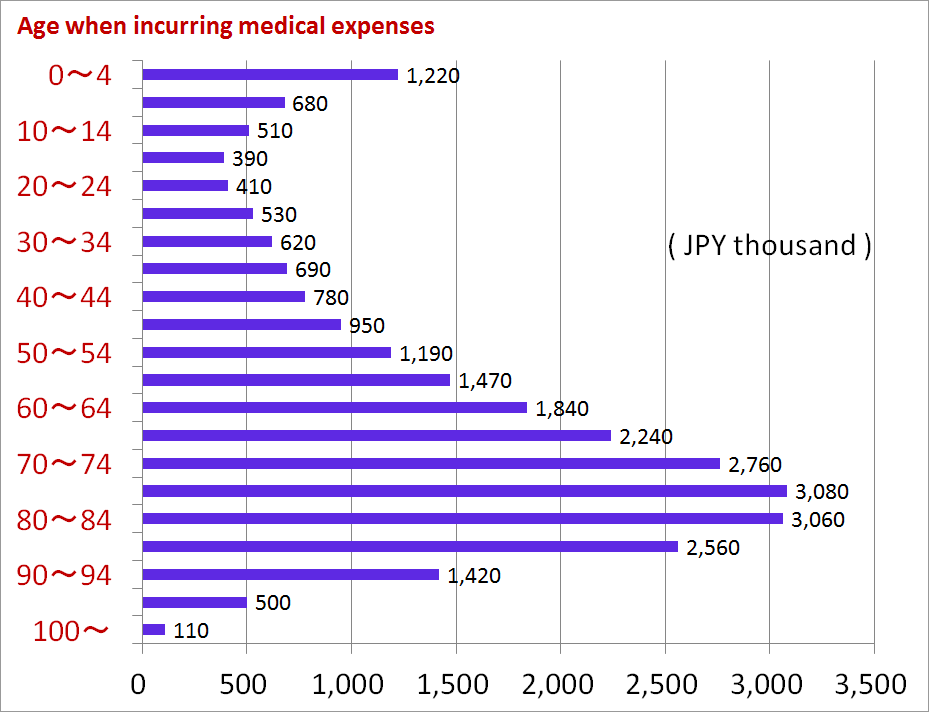Column Finance and the Social Security System 2018.05.17
【Aging, safety net and fiscal crisis in Japan】No.110: Lifetime Medical Expenses
The Government aims to save money on medical expenses by providing citizens with health guidance based on data. If the public becomes healthy and the frequency of medical use is reduced by the "Data Health" project, the corresponding effect of saving money on medical expenses can be expected. However, even if people become healthier and the average life expectancy increases, they will inevitably become sick and make use of medical expenses before they die; it is not necessarily true that lifetime medical expenses per person will reduce as a result of the Data Health project.
The Ministry of Health, Labor, and Welfare has updated an estimate of lifetime medical expenses per person. The results, calculated on the basis of the actual medical expenses per age group in 2015, are JPY 25,840 thousand for males, JPY 28,220 thousand for females, and JPY 27,000 thousand in total. This does not include long-term care expenses. Figure 1 shows the medical expenses for each age category of lifetime medical expenses. While medical expenses after the age of 70, JPY 13,490 thousand, account for 50% of lifetime medical expenses, if life expectancy increases with data health, this proportion is expected to increase.
Figure 1: Lifetime medical expenses per person

Source: Ministry of Health, Labor and Welfare
